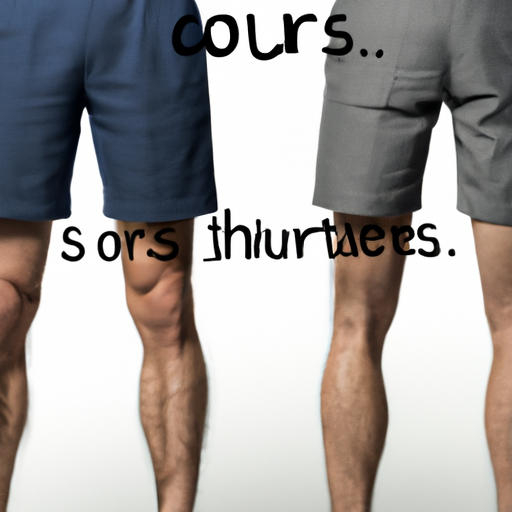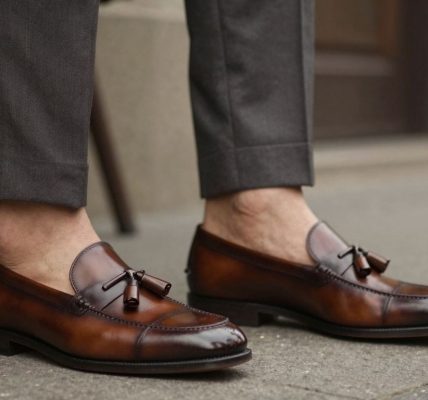-
Table of Contents
- Introduction
- The History of Professional Attire: Why Shorts Are Not Considered Professional
- The Pros and Cons of Wearing Shorts to the Office
- How to Dress Professionally Without Wearing Shorts
- The Etiquette of Wearing Shorts in the Workplace
- How to Stay Cool and Professional in the Summer Without Wearing Shorts
- The Impact of Wearing Shorts to Work on Your Professional Image
- How to Dress Professionally Without Sacrificing Comfort: Alternatives to Wearing Shorts
- Q&A
- Conclusion
Introduction
Shorts are a popular choice of clothing for casual and warm weather occasions, but they are not typically considered appropriate for professional settings. While shorts may be comfortable and convenient, they are not seen as professional attire and can be seen as unprofessional in certain contexts. This article will discuss why shorts are not professional and provide tips on what to wear instead.
The History of Professional Attire: Why Shorts Are Not Considered Professional
Professional attire has been a part of the workplace for centuries, and it has evolved over time to reflect the changing values and expectations of the workplace. Professional attire is typically seen as a way to show respect for the workplace and to demonstrate a level of professionalism. While the definition of professional attire has changed over time, one thing that has remained consistent is that shorts are not considered professional attire.
The history of professional attire dates back to the 19th century, when the industrial revolution was in full swing. During this time, the workplace was becoming increasingly formalized, and employers began to expect their employees to dress in a certain way. This typically meant wearing a suit and tie, or a dress and hat for women. This was seen as a way to show respect for the workplace and to demonstrate a level of professionalism.
As the 20th century progressed, the definition of professional attire began to change. The suit and tie became less common, and more casual attire was accepted in the workplace. However, shorts were still not considered professional attire. This is because shorts are seen as too casual and not appropriate for the workplace. They are also seen as too revealing and not appropriate for a professional setting.
Today, professional attire is much more relaxed than it was in the 19th century. However, shorts are still not considered professional attire. This is because they are still seen as too casual and not appropriate for the workplace. They are also seen as too revealing and not appropriate for a professional setting.
In conclusion, professional attire has evolved over time, but shorts are still not considered professional attire. This is because they are seen as too casual and not appropriate for the workplace. They are also seen as too revealing and not appropriate for a professional setting.
The Pros and Cons of Wearing Shorts to the Office
Wearing shorts to the office can be a controversial topic. On one hand, shorts can be comfortable and appropriate for certain types of workplaces. On the other hand, shorts may not be suitable for all office environments. Before deciding to wear shorts to the office, it is important to consider the pros and cons.
One of the main advantages of wearing shorts to the office is comfort. Shorts are typically more comfortable than trousers or skirts, especially in hot weather. They also allow for more freedom of movement, which can be beneficial for those who are active in the workplace. Additionally, shorts can be a great way to express personal style and make a fashion statement.
However, there are also some potential drawbacks to wearing shorts to the office. Shorts may not be appropriate for all types of workplaces, and may be seen as too casual or unprofessional. Additionally, shorts may not provide enough coverage for some people, and may be considered inappropriate in certain settings.
Ultimately, the decision to wear shorts to the office should be based on the individual’s workplace and personal preferences. If shorts are allowed in the workplace and the individual feels comfortable wearing them, then they can be a great way to stay cool and express personal style. However, if shorts are not appropriate for the workplace, then it is best to stick to more traditional office attire.
How to Dress Professionally Without Wearing Shorts
When it comes to dressing professionally, shorts are often not the first choice. However, there are plenty of other options that can help you look professional without having to wear shorts. Here are some tips for dressing professionally without wearing shorts:
1. Choose trousers or slacks. Trousers and slacks are a great alternative to shorts and can be dressed up or down depending on the occasion. Look for trousers or slacks in neutral colors such as black, navy, or gray.
2. Opt for a skirt or dress. Skirts and dresses are a great way to look professional without having to wear shorts. Look for skirts or dresses in classic cuts and neutral colors.
3. Wear a blazer or cardigan. Blazers and cardigans are a great way to dress up any outfit and can be worn over trousers, skirts, or dresses. Look for blazers and cardigans in neutral colors such as black, navy, or gray.
4. Accessorize. Accessories can help to dress up any outfit and make it look more professional. Look for accessories such as scarves, jewelry, and belts in neutral colors.
By following these tips, you can look professional without having to wear shorts. With the right pieces, you can create a stylish and professional look that is appropriate for any occasion.
The Etiquette of Wearing Shorts in the Workplace
When it comes to dressing for the workplace, shorts are often a controversial topic. While some employers may allow shorts in the workplace, it is important to understand the etiquette of wearing shorts in the workplace.
First and foremost, it is important to check with your employer to see if shorts are allowed in the workplace. If shorts are allowed, it is important to ensure that they are appropriate for the workplace. Shorts should be of a professional length, typically no more than two inches above the knee. Additionally, shorts should be made of a professional material, such as khaki or linen. It is also important to ensure that the shorts are not too tight or too loose.
When wearing shorts in the workplace, it is important to pair them with a professional top. Shirts should be collared and tucked in, and should not be too revealing. Additionally, it is important to avoid wearing shorts with any type of graphic or logo.
Finally, it is important to remember that shorts are not appropriate for all workplaces. In more formal settings, such as a law office or a bank, shorts are typically not allowed. Additionally, it is important to remember that shorts are not appropriate for client meetings or other professional events.
By following these guidelines, you can ensure that you are dressing appropriately for the workplace when wearing shorts.
How to Stay Cool and Professional in the Summer Without Wearing Shorts
As the summer months approach, it can be difficult to stay cool and professional in the workplace without resorting to wearing shorts. However, there are a few tips and tricks that can help you stay comfortable and look professional in the heat.
First, choose lightweight fabrics such as cotton, linen, and rayon. These fabrics are breathable and will help keep you cool. Avoid wearing synthetic fabrics such as polyester, which can trap heat and make you feel even hotter.
Second, opt for lighter colors. Darker colors absorb more heat, so wearing lighter colors will help keep you cool.
Third, choose clothing with a loose fit. Tight clothing can restrict air flow and make you feel even hotter.
Fourth, accessorize with a lightweight scarf or hat. These items can help protect you from the sun and keep you cool.
Finally, keep a small fan or portable air conditioner nearby. This can help keep you cool and comfortable while you work.
By following these tips, you can stay cool and professional in the summer without having to resort to wearing shorts.
The Impact of Wearing Shorts to Work on Your Professional Image
The decision to wear shorts to work can have a significant impact on one’s professional image. While shorts may be comfortable and appropriate in certain settings, they are generally not considered appropriate in a professional environment.
Shorts are typically considered casual attire and are not suitable for most professional settings. Wearing shorts to work can give the impression that one is not taking their job seriously or that they are not committed to their work. It can also give the impression that one is not taking their appearance seriously, which can be seen as unprofessional.
In addition, wearing shorts to work can be distracting to others. Shorts are often seen as more revealing than other types of clothing, and this can be distracting to coworkers and clients. This can make it difficult to focus on work and can create an uncomfortable atmosphere.
Finally, wearing shorts to work can be seen as disrespectful to coworkers and clients. It can give the impression that one is not taking their job seriously or that they are not taking their appearance seriously. This can be seen as disrespectful and can damage one’s professional reputation.
In conclusion, wearing shorts to work can have a significant impact on one’s professional image. Shorts are generally considered inappropriate in a professional setting and can be seen as disrespectful to coworkers and clients. Therefore, it is important to consider the potential impact of wearing shorts to work before making the decision to do so.
How to Dress Professionally Without Sacrificing Comfort: Alternatives to Wearing Shorts
When it comes to dressing professionally without sacrificing comfort, there are many alternatives to wearing shorts. Here are some of the most popular options:
1. Khakis: Khakis are a great option for a professional look without sacrificing comfort. They are lightweight and breathable, making them perfect for warm weather. They also come in a variety of colors and styles, so you can find the perfect pair to match your outfit.
2. Chinos: Chinos are a great alternative to shorts for a professional look. They are usually made of a lightweight cotton or linen fabric, making them comfortable and breathable. They come in a variety of colors and styles, so you can find the perfect pair to match your outfit.
3. Jeans: Jeans are a classic option for a professional look. They are usually made of a heavier fabric, so they are more durable and long-lasting. They come in a variety of colors and styles, so you can find the perfect pair to match your outfit.
4. Skirts: Skirts are a great option for a professional look without sacrificing comfort. They are usually made of a lightweight fabric, making them comfortable and breathable. They come in a variety of colors and styles, so you can find the perfect skirt to match your outfit.
5. Dresses: Dresses are a great option for a professional look without sacrificing comfort. They are usually made of a lightweight fabric, making them comfortable and breathable. They come in a variety of colors and styles, so you can find the perfect dress to match your outfit.
No matter what you choose to wear, you can look professional without sacrificing comfort. With these alternatives to wearing shorts, you can look your best while still feeling comfortable.
Q&A
1. Why are shorts not considered professional attire?
Shorts are generally not considered professional attire because they are too casual and informal for most professional settings. They are also often too revealing and can be distracting in a professional environment.
2. What should I wear instead of shorts for a professional setting?
For a professional setting, it is best to wear trousers, slacks, or a skirt. These items are more appropriate and will give you a more polished and professional look.
3. Are there any exceptions to the rule that shorts are not professional?
Yes, there are some exceptions to the rule that shorts are not professional. For example, if you are working in a casual environment such as a beach or pool, shorts may be acceptable.
4. Are there any other items of clothing that are not considered professional?
Yes, there are other items of clothing that are not considered professional. These include items such as t-shirts, tank tops, flip-flops, and jeans.
5. Is there a way to make shorts look more professional?
Yes, there are ways to make shorts look more professional. For example, you can choose a pair of tailored shorts in a neutral color and pair them with a dress shirt and blazer.
6. Are there any other tips for dressing professionally?
Yes, there are other tips for dressing professionally. Make sure to choose clothing that is appropriate for the occasion and that fits well. Also, make sure to accessorize with items such as a belt, watch, and jewelry.
7. What should I do if I am unsure about what is considered professional attire?
If you are unsure about what is considered professional attire, it is best to err on the side of caution and choose more conservative clothing. You can also ask your employer or colleagues for advice on what is appropriate for the workplace.
Conclusion
In conclusion, shorts are not considered professional attire because they are too casual and informal for most professional settings. They are also not appropriate for formal occasions, such as job interviews, business meetings, or other important events. Shorts are best reserved for casual activities, such as going to the beach or running errands.


